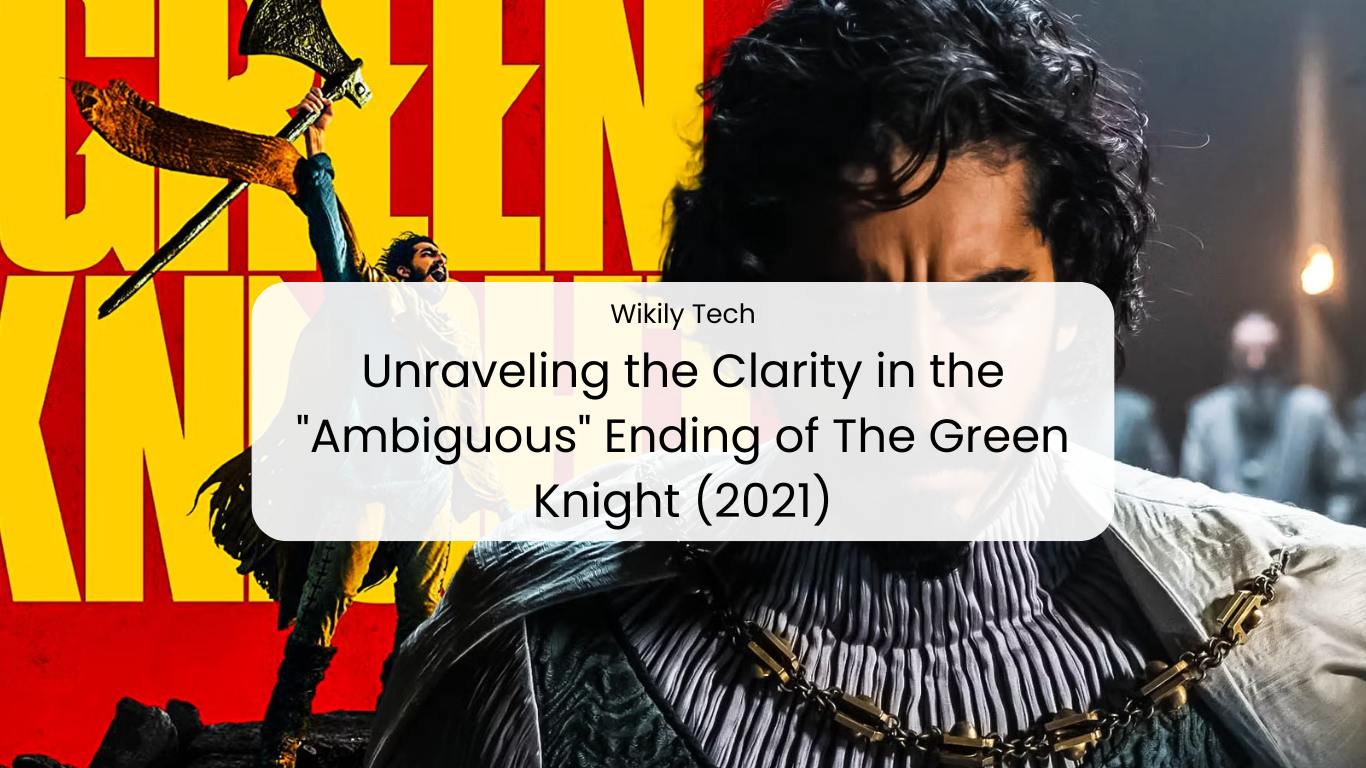The 2021 film “The Green Knight,” directed by David Lowery, is a cinematic adaptation of the medieval tale “Sir Gawain and the Green Knight.” The movie concludes in a manner that has sparked considerable debate, with many viewers labeling the ending as ambiguous.
However, upon closer examination, it’s clear that the film’s conclusion is not as enigmatic as it might initially appear.
Contents
Understanding the Ending
At the heart of “The Green Knight” is a journey of self-discovery and moral testing, with Gawain (played by Dev Patel) facing various challenges that test his honor, courage, and integrity.
The ending, which seems open-ended, actually ties back to these central themes quite directly.
The Final Test
The climax of the movie sees Gawain at the Green Chapel, where he must fulfill his end of the bargain struck a year earlier: to receive a blow from the Green Knight.
As the Green Knight raises his axe, Gawain envisions a future where he flees the scene, returns to his kingdom, and lives a life filled with deceit and regret. This future vision concludes with him being despised and dying in disgrace.
The Decision to Accept Fate
After this vision, Gawain returns to the present and decides to face his fate. He removes his magical girdle — which is supposed to protect him from harm — and bravely exposes his neck to the Green Knight. This act of accepting his fate and choosing honor over deceit is the true resolution of the film.
The Green Knight’s final line, “Well done, my brave knight. Now, off with your head,” is delivered with a chuckle, suggesting a metaphorical rather than literal beheading, symbolizing Gawain’s shedding of his cowardice and dishonesty.
Why the Ending is Not Ambiguous
The film’s conclusion is a poignant illustration of Gawain’s growth. By choosing to face the consequences of his actions honestly, he completes his transformation from a reckless youth to a noble man.
This decision aligns with the moral lessons embedded throughout the movie and the original Arthurian tales, which emphasize the virtues of chivalry and truth.
Symbolic Interpretations
The ending is rich with symbolism. The removal of the girdle represents Gawain’s rejection of magical aids and his acceptance of his mortal limitations and responsibilities.
His decision to face the Green Knight without the protection of the girdle is a symbolic act of maturity, indicating his readiness to accept the consequences of his actions without relying on supernatural interventions.
Conclusion
The resolution of “The Green Knight” might seem unclear to those expecting a more conventional closure. However, by embracing the symbolic and thematic underpinnings of the narrative, it becomes evident that the film provides a definitive conclusion to Gawain’s quest.
It is a tale of personal growth, where the true challenge is for Gawain to overcome his flaws and embrace his virtues. Thus, rather than being ambiguous, the ending celebrates the triumph of character and moral integrity in a beautifully nuanced manner.
Related:-
